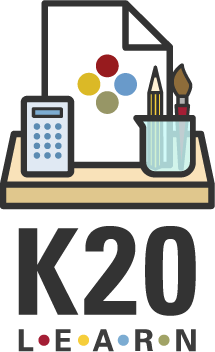Summary
This professional learning session focuses on insights into the roles of all stakeholders involved in the Check & Connect® program. Participants will examine the factors that can influence a student’s decision to remain in school, the positive impact that the Check & Connect® program can have on student success, and the powerful role that the whole school community can play in supporting Check & Connect® students and mentors.
Essential Questions
How can all stakeholders contribute to success of the Check & Connect® program?
Snapshot
Engage
Participants consider the behaviors of an engaged student.
Explore
Participants explore the factors that may contribute to students ultimately dropping out of school and which of these are static or dynamic.
Explain
Participants view testimonials from Check & Connect® mentors and mentees, analyze student data, and determine the support needed for effective program implementation.
Extend
Participants consider the role that various stakeholders play in the Check & Connect® program.
Evaluate
Participants reflect on how they feel about supporting the Check & Connect® program in their schools.
Materials List
Presentation Slides (attached)
Card Sort: Static or Dynamic (attached; one per group of 4-6)
(Optional) Sample Student Data handout (attached; one per group of 4-6)
Four Corners (attached; one set)
Chart Paper (at least 4 sheets)
Markers (8-12)
(Optional) Internet capable devices
Learning Goals
Examine the role and responsibilities of all stakeholders in the Check & Connect® program.
Explore the data and types of support necessary for Check & Connect® mentors to implement the program effectively.
Determine personal readiness and commitment to support the implementation of the Check & Connect® program.
Engage
30 Minute(s)
Prior to beginning the presentation, hang chart paper in each corner of the room for the first activity.
Use the attached Presentation Slides to guide the session. Begin by displaying the title slide, then continue to slide 3 and ask participants “How would you describe an engaged student?” Direct participants to respond by adding a short description to each of the posters for what an engaged student Looks Like, Sounds Like, Feels Like. Advise them that they are free to start on any poster, but suggest they try to spread out.
Let participants know this activity is meant to be done in silence and their response can be written in text or drawn. The silent Chalk Talk format of completing the Looks Like, Sounds Like, Feels Like strategy encourages thoughtful reflection from all participants.
Once the participants have completed their posters, review the Session Objectives on slide 4 and the essential question on slide 5. If time permits, have a few participants share what they added or read a few responses from each poster.
Explore
Transition to slide 6 and ask participants to share factors that may lead a student to ultimately drop out of school. As participants verbally share their Collective Brain Dump, write their responses on a sheet of chart paper. When participants can think of no more responses, hang the chart paper in a place where all can view it.
Display slide 7 and review the difference between static and dynamic factors. For example, family structure is static. Students cannot change whether they are in a single-parent home. However, poor grades is a dynamic factor and can be changed. Pass out the Static or Dynamic? cards, one set to each table, or break participants up into small groups of 4-6. Once the individual groups have sorted the cards, ask them to add other factors on the blank cards that may reflect on student performance. Invite each group to share what they have determined is static and what they have determined is dynamic. Have them discuss the two categories and include a discussion of how what may seem static can be turned into a dynamic factor. Use this time to discuss strategies for creating an active learning environment that is inclusive where every student is valued and supported.
Explain
Transition to slide 8 and introduce the Check & Connect® program by playing the Gear Up Check and Connect Testimonial video. When the video has concluded, move through slides 9-10 to briefly review the “Check“ and “Connect“ in the Check & Connect® program.
Move to slide 11 to display the sample student data. Optionally, pass out the attached Sample Student Data handout, one per small group.
Ask participants to discuss the I Notice, I Wonder questions on slide 12 with their small group. Each participant should consider these questions in regard to their own role at the school (teacher, counselor, librarian, coach, etc.). Provide at least 10 minutes for groups to review the data and discuss their responses. Ask 2-3 small groups to share what they discussed with the whole group.
Display slide 13 to illustrate how a Check & Connect® mentor spends their time with one student in a given week. Let participants know this is a simplified overview. Each task or time could vary depending on the needs of each student.
Move to slide 14 and introduce a modified version of the Four Corners strategy. Let participants know they will need to stand up and move to one of the four corners (students, families, mentors, staff) of the room based on their response to the prompt: Who do you think has the most important role in supporting the success of Check & Connect®?
Tell participants to stay with their Four Corners poster group for the next activity, but they may return to seats. Transition to slide 15 and ask participants to identify how the four groups of stakeholders can support the Check & Connect® program.
Extend
Transition to slide 16 and pass out blank sheets of paper, several sheets per small group.
Advise the participants they are now going to use the List of 8 strategy to discuss the role of a mentor and other stakeholders. After each group has their blank paper, ask them to select a scribe who will also be their spokesperson at the conclusion of each round of this activity.
The List of 8 strategy is essentially a race between the groups to see who can respond to each prompt the quickest. Teams are given a prompt which asks them to “list eight examples of…” at the start of each round. Each group decides on a predetermined order (clockwise or any other order) for team members to respond. Each team member contributes a response, but they can say “pass” so the next person in order then responds. The scribe writes down each response. When a group completes a list of 8 responses, they raise their hands; then, the scribe shares their list. The fastest group wins the round, but they earn a point for each incorrect list item. The team with the lowest score at the end of all rounds wins.
If needed, model a practice round for the participants. For example, if the prompt was “list eight examples of fruit,” the first team member would say “apple,” the second might say “banana,” and so on until the team has created a list of eight examples of fruit.
After participants are clear on how the strategy works, provide them the following prompts for each round. Give them two minutes to answer round one, but only one minute to answer in subsequent rounds. Transition to slide 17 and use each of the following prompts for six rounds.
List eight characteristics or skills of a good mentor.
List eight roles a mentor plays in the life of a student.
List eight resources a mentor may need to support a student.
List eight ways a family can help a student remain in school.
List eight things a student can do to remain in school.
List eight things school staff can do to help a student remain in school.
At the end of each round, ask the “winning” group to share their list. If time permits, have the other groups share anything on their lists that has not already been shared. Briefly discuss any list items that may not fit the prompt. To wrap up this activity, display slide 18 to discuss with participants what a mentor is not.
Evaluate
To begin wrapping up this introduction to Check & Connect®, move to slide 19 and play the short (39 second) video, ‘If You Mentor Me…‘
Display slide 20 to introduce the How Am I Feeling? What Am I Thinking? strategy. Ask participants how they are feeling about the Check & Connect® program? What are they thinking about supporting the Check & Connect® program?
Research Rationale
The research article by Guryan et al. (2020) investigates the Check & Connect (C&C) program, a structured mentoring initiative aimed at improving student engagement and reducing absenteeism. The authors highlight the significance of addressing truancy as a precursor to high school dropout, emphasizing the need for interventions that build social capital through supportive adult relationships. The study is set against the backdrop of declining resources for truancy prevention in urban school districts, particularly Chicago, where the program was implemented.
Resources
Guryan, J., Christenson, S., Cureton, A., & Lai, I. (2020). The effect of mentoring on school attendance and academic outcomes: A randomized evaluation of Check & Connect® program. Journal of Policy Analysis and Management. 40(3) DOI:10.1002/pam.22264
K20 Center. (n.d.). Card sort. Strategies. https://learn.k20center.ou.edu/strategy/147
K20 Center. (n.d.). Chalk talk. Strategies. https://learn.k20center.ou.edu/strategy/197
K20 Center. (n.d.). Collaborative word clouds. Strategies. https://learn.k20center.ou.edu/strategy/103
K20 Center. (n.d.). Collective brain dump. Strategies. https://learn.k20center.ou.edu/strategy/111
K20 Center. (n.d.). Four corners. Strategies. https://learn.k20center.ou.edu/strategy/138
K20 Center. (n.d.). EdWordle. Tech Tools. https://learn.k20center.ou.edu/tech-tool/693
K20 Center. (2025, July 11). GEAR UP Check and Connect Testimonial. [Video]. YouTube. https://youtu.be/UWFasBzMws0?si=FwZWWu4GW3qVUfsb
K20 Center. (n.d.). How am I feeling? What am I thinking? Strategies. https://learn.k20center.ou.edu/strategy/187
K20 Center. (n.d.). I notice, I wonder. Strategies. https://learn.k20center.ou.edu/strategy/180
K20 Center. (n.d.). List of 8. Strategies. https://learn.k20center.ou.edu/strategy/3616
K20 Center. (n.d.). Looks like, sounds like, feels like. Strategies. https://learn.k20center.ou.edu/strategy/88
K20 Center. (n.d.). Mentimeter. Tech Tools. https://learn.k20center.ou.edu/tech-tool/645
Mentoringorg. (2018, January 2). “If You Mentor Me...” [Video]. YouTube. https://youtu.be/gcnX-wvp98Q?si=4wM_x_3uF8ZezIxP
Teachers Institute. (2024). Transforming classrooms into dynamic learning environments. https://teachers.institute/learning-teaching/dynamic-learning-environments-classrooms/


